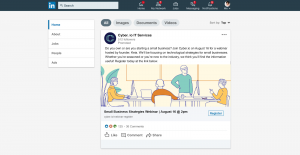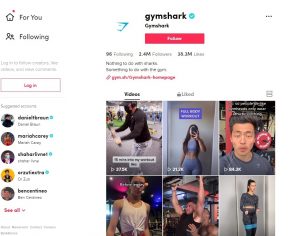
It happens to all of us from time to time. We want to get a new message out ASAP, but despite our intense brainstorming, the ideas simply aren’t there. No worries! Chances are pretty good that the solution to our dilemma is right at our fingertips – in our content archive.
With a little imagination, there are many ways we can turn old content into something brand new. Here are ten ways to do just that.
10 ways to repurpose your content for your emails
1. Create roundups from previous blog posts
“You can create a theme and then pick the content that fits before you send the email,” suggests Autumn Rivers at The Marketing Scope. “This way, your old blog posts have a new purpose, and you now have relevant content for the emails you send. For example, your theme might be content marketing, in which case you can look through your blog and choose five posts that would help someone who needs content marketing tips.”
2. Develop and promote an ebook
“A great way to repurpose your content is to make it into an ebook,” according to AltusHost. “All you have to do is recycle your content into one big, greatly designed, and coherent story. Chapter titles, chapter summaries and even chapter or paragraph illustrations can become a valuable asset in your email marketing strategy, if you, of course, link it back to that dedicated landing page where people can buy your ebook or download it for free.”
3. Turn data from presentations or other sources into an infographic
“Infographics might take a little more effort to produce than a blog post, but they’re one of the most powerful weapons in your content marketing arsenal,” writes WordStream’s Dan Shewan. “Infographics can be skimmed quickly, making them appealing to today’s mildly ADD media consumer, and they can distill a great deal of complex information into an easily digestible format.”
4. Develop a case study from your company’s internal data
“If your company has any kind of internal data, consider turning it into a case study,” suggests Eric Sachs of the Sachs Marketing Group. “Reach out to current and past clients to see how your products/services have helped them reach their goals. Or, run tests in your own website and save the data to use. Case studies can help you earn trust and credibility since they show your customers how you can help them, too.”
5. Turn your webinar into a video tutorial, post it on online and promote it by email
“You host a kickass webinar that gets tons of attendees,” writes Megan Marrs on the WordStream blog. “It’s a huge success! But of course, not everyone will make it to your webinar, and months later you’ll have new site visitors and leads who don’t even know what they missed out on. You can repurpose that webinar as a YouTube video, ensuring that your great content lives forever.”
6. Make your most popular posts even more popular
“Your email subscribers may not know about your most popular articles and blog posts,” writes Kate Kiefer-Lee at VentureBeat. “Show them what you have to offer.”
7. Find a new way to approach old topics
“When you look through your old content, think of yourself as a beat reporter for your business,” suggests Monica Montesa on the AWeber blog. “First, you want to look for content that received greater engagement than usual (higher click-throughs or open rates, increased traffic to a blog post, etc.). Then ask yourself if there’s a way to take a fresh, new angle on that topic you’ve already written about.”
8. Leverage your best-selling products
“If you sell products online, send periodic emails sharing your best sellers,” writes Kate Kiefer-Lee. “You can use an image and product description you already have on your site. It’s a great way to introduce your customers to items they might not think about while giving your best sellers a boost.
9. Create an email series
“When it comes to repurposing content, email series are a perfect channel,” according to Hootsuite’s Bill Widmer. “You can take an eBook or even a long blog post and split it into several parts which you send out to your email list over a few days or weeks.”
10. Create a course from an ebook or blog posts
“Got an informative how-to ebook or a collection of related, instructional blog posts?” asks Megan Totka at Wishpond. “Break up your ebook (or organize your blog posts) into logical segments, and use an autoresponder to deliver each session to new subscribers at timed intervals, along with your marketing message and call-to-action at the end of each session.”
Digital & Social Articles on Business 2 Community(55)







